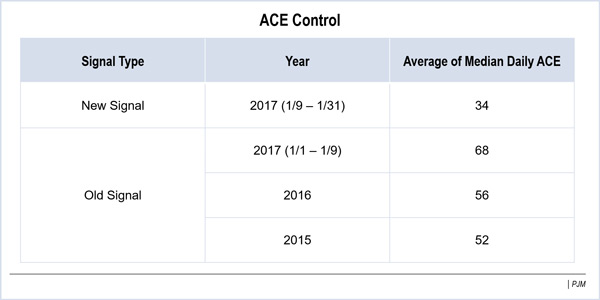VALLEY FORGE, Pa. — A simulated performance assessment hour last summer would have produced nearly $13.5 million in nonperformance charges, resulting in approximately $1,283/MWh bonus payments for overperforming units, PJM’s Joe Ciabattoni said at Tuesday’s Operating Committee meeting. (See PJM Generator Notification Plan Gets Mixed Review.)
The simulation, which was requested by stakeholders, was simplified to exclude bonus capping and excusals for shortfalls. “Just remember it’s a simulation,” PJM’s Mike Bryson cautioned.
PJM used the 3-4 p.m. hour on Aug. 11, a $1,896.30/MWh penalty rate and Tariff formulas to determine the expected and actual performance. Of the 528 capacity resources, 176 combined for a total shortfall of 7,093 MW, while 306 exceeded their promised output by a combined 10,485 MW. There were 46 resources with neither a shortfall nor a bonus.
Fifteen resources would have been charged more than $250,000 each, with the highest individual charge calculated at almost $1.2 million. Twenty-five resources would have received more than 100 MW worth of bonus payments, with the largest individual credit equaling 601 MW. PJM also calculated separate numbers for just the Mid-Atlantic territory.
Stakeholders felt the broad focus left too much ambiguity. “To me, there are so many details left out that it raises more questions than it does provide answers,” American Electric Power’s Brock Ondayko said.
On some levels, PJM agreed. “I don’t know if we consider this a good predictor of what to expect or not,” PJM’s Adam Keech said.
Later, PJM staff reviewed member responsibilities for several other components of Capacity Performance, including inputting real-time values such as minimum and maximum run times to reflect operational capabilities when the resource cannot operate according to its unit-specific parameters. The deadline for changing unit parameters for delivery year 2017/18 is Feb. 28.
“This is your opportunity to give us the rest of the story,” Ciabattoni said.
The D.C. Circuit Court of Appeals is scheduled to hold oral arguments Feb. 14 on environmentalists’ challenge to FERC’s approval of CP. (See Clean Energy Advocates Appeal FERC’s Capacity Performance Rulings.)
Stakeholders Debate Replacing Second Ramapo PAR

That leaves just one PAR at the facility, but Con Ed is waiting for certainty on cost allocation before replacing the second one, PJM said. Without it, PJM’s transfer capability into NYISO is limited by about 300 MW. The situation is complicated by the fact that Con Ed is ending its PJM membership in May with the termination of the Con Ed-PSEG “wheel.” (See NYISO Members OK End to Con Ed-PSEG Wheel.)
The grid operators are considering modifications to their joint operating agreement to develop a cost recovery mechanism for replacing the PAR. The methodology would be used for future cost sharing as well.
The PARs were added in 1988 to control loop flows that had undermined the reliability benefits of the Branchburg-Ramapo 500-kV line, which was built in response to the 1965 Northeast blackout. The current agreement splits costs of the two PARs 50-50 between NYISO and PJM.
Stakeholders were quick to question the financial implications of the proposal, including how much it would cost and what PJM’s thoughts were on a likely cost allocation agreement.
“We do not have any preconceived notions of how that would work,” PJM’s Stan Williams said, adding that the replacement would cost $10 million to $20 million. He confirmed PJM’s plan to consider the changes through a problem statement and issue charge.
Williams also acknowledged that some of the PARs’ main benefits have been “muted” since they were initially implemented. The second PAR reduces the risk of sustained customer outages during severe weather, but that happens “rarely,” he said. Additionally, the loop flows that originally necessitated the PARs have been reduced.
PJM has conducted modeling both for the operational baseflow that will replace the wheel with one PAR, or two PARs, PJM’s Paul McGlynn said. However, PJM’s current planning parameters for the upcoming Base Residual Auction assumes two PARs, he said.
The grid operators are planning joint stakeholder meetings on the issue, likely beginning in March, Williams said.
New Regulation Rules Improving ACE Control
Recent changes to regulation signals and operational requirements are improving area control error (ACE) statistics, PJM’s Eric Hsia said. (See “Regulation Requirement Changing from ‘Peak’ to ‘Ramp,’” PJM Operating Committee Briefs.)
The average of the median daily ACE has been cut in half since the new signal was implemented and the monthly average mileage ratio has more than doubled. That indicates a larger utilization of Regulation D resources and better alignment of Regulation A signals with unit ramps, PJM said.
“We’re moving the Reg-D resources more aggressively,” Hsia said.
Modeling Improvements Reducing Balancing Congestion
PJM’s efforts last year to improve the alignment between its day-ahead and real-time modeling has reduced balancing congestion, PJM’s Nicole Scott said.
The RTO calculated impedance differences to compare the planning model versus the model used by operators, Scott said, and used summer 2015 peak base cases as a benchmark. Staff has worked to improve the parity between the models by correcting errors, increasing mapping of transmission facilities, refining processes and providing additional training, she said.
The goal is “normalizing the two models to get them to look the same,” PJM’s Mark Sims said. “If we tried to do this five years ago, we would [have struggled], but everything lined up [now].”
Among additional initiatives for 2017, PJM plans to create an alarm warning when a model is out of compliance.
Committee Endorsements
The Operating Committee endorsed by acclamation:
- A pro forma agreement for new pseudo-ties. The agreement would define the general rules for new pseudo-ties into PJM and essentially standardize the process. (See PJM, MISO Go Quiet on Pseudo-Ties; Reach Interface Pricing Accord.)
- Sunsetting the Metering Task Force, whose work was completed with revisions to metering standards and requirements in Manual 1. (See “No Objections to Metering Revisions,” PJM Markets and Reliability and Members Committees Briefs.)
– Rory D. Sweeney



